As long as I keep drinking green smoothies regularly, I never suffer from constipation. The only times I do get constipated is when I travel and am unable to consume my usual diet rich in green smoothies and other whole foods.
Consuming lots of fresh, raw fruits, vegetables, and greens, definitely helps to “keep things moving” in this department. These foods provide such abundance of fiber and liquids that they virtually swipe your intestines like a broom, and are the best remedy for constipation relief.
Green smoothies act like a broom, cleaning up your many, many feet of intestinal tract, and helping elimination of all the unnecessary stuff and garbage from your body.
However, if you are just beginning to drink green smoothies (or switching to a more natural-fiber-rich diet), you may feel surprisingly bloated and constipated initially. This will come as an unpleasant surprise, especially, if one of your motives has been better digestion and better elimination.
You may be asking yourself: “Why am I constipated after drinking green smoothies?”
Constipation can be a surprising side effect of increasing the amount of fiber in the diet for some people. Usually, this is a result of a sudden increase of fiber coupled with dehydration.
Let’s say that you’ve been eating a diet rich in animal protein (no fiber) and white flour breads and pastas (very little fiber), which is common for many people eating a Standard American Diet (SAD). Then you suddenly flood your body with green smoothies and whole foods and your fiber intake jumps to 2 or 3 times (or more). All of that soluble fiber in fruits and vegetables is now absorbing moisture in your intestines and slowly trudging through your bowels. This will cause problems especially if you have not increased your water intake.
Many people give up at this point, assuming that this type of diet is not for them. They will be blaming raw fruits and vegetables for their problem, and vow to avoid them at all cost.
BIG MISTAKE!
Fact is your body needs time to adjust to the new healthier regimen, and if you are experiencing difficulties, you’ll just need to slow down a bit and give your body some time get used to the new diet.
If you are not used to eating loads of fresh fruits and vegetables, then increase your water consumption and make sure you increase your fiber intake GRADUALLY over a week or two.
Avoid taking fiber supplements if you are getting adequate fiber in the diet through green smoothies and fresh fruits and vegetables. Reduce your consumption of dried or powdered foods (even the super-foods).
If you are still feeling a bit “backed-up” and bloated, try out one of the prune smoothie recipes below as a natural and nutritious way to get things moving. It’s great for digestion and boosting energy. This smoothie is full of beta-carotene, folate, vitamins B1, B3, and B6.
Do prunes really work as a laxative?
There are many old wives’ tales out there regarding our health, however, in this case, your grandma was right.
Prunes are especially high in fiber and contain sorbitol, a stool-loosening sugar that naturally helps relieve constipation. Sorbitol is a mild colonic stimulant that helps reduce transit time of stool and thus decrease the risk of constipation. That is why prunes are often recommended for fast constipation relief.
Fresh plums are filled with minerals and also have a mild laxative effect. They can relieve gas and have a cleansing effect on your intestines.
However, prunes are generally considered more effective than plums for constipation relief.
How To Use Prunes In A Green Smoothie
The prune smoothie recipe requires a bit of advance preparation to plump up the prunes by putting them in a cup of hot water for about ten to twenty minutes but the results are well worth it.
“Keeping things Moving” Prune Smoothie
- 9 prunes, pitted and soaked
- 1 pear
- 1 cup water or organic apple juice
- 1/2 tsp vanilla essence
Apple Prune Smoothie
- 6 prunes, pitted and pre-soaked until plump
- 1 1/2 cup apple juice
- 2 stalks of celery
- one handful of organic spinach
- 1/4 tsp cinnamon
- pinch of nutmeg
PRUNE POWER Smoothie With Yogurt
- Pitted prunes, 6 pieces
- Apple juice, 1 cup
- Crushed ice, 1 cup
- Non-dairy vanilla yogurt (such as soy), 1 cup
- Cinnamon powder, 1/4 teaspoon
- Grated nutmeg, 1 pinch
First, submerge the prunes in warm water for 15 minutes. Then drain the prunes. Let it cool down. Blend in the prunes, apple juice, ice and yogurt. Add cinnamon and nutmeg to taste.
Blend to desired consistency. Serve and enjoy!
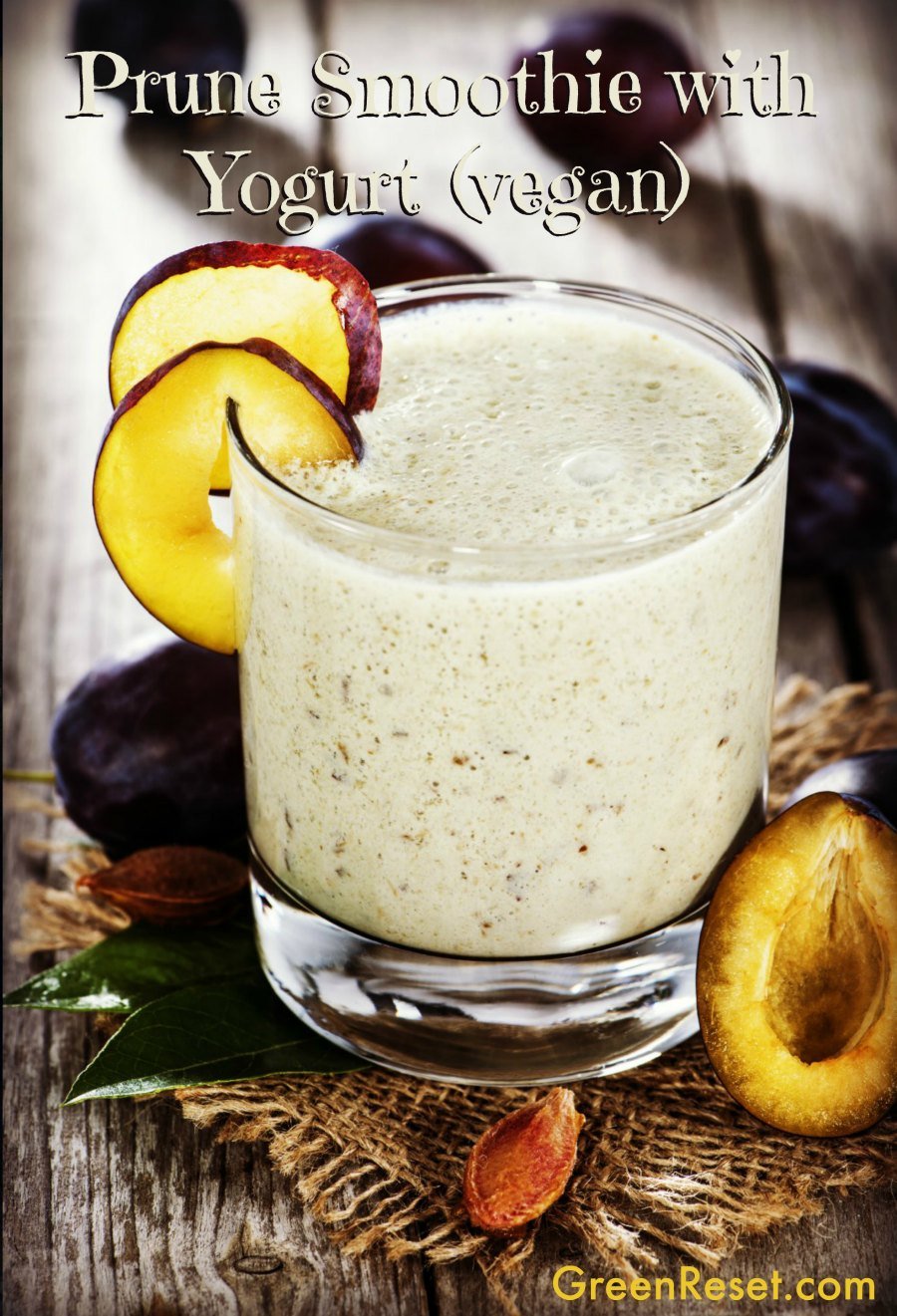
If you drink green smoothies every day, your elimination will become effortless, almost odorless and quick – you will not be able to catch up on your reading while sitting on the toilet, because you’ll be done by the end of the first paragraph ;-).
Note: If constipation continues to be a problem, or if it is a common problem for you no matter what diet you are on, then consult a qualified health practitioner who can help rule out any health issues.
For all my blending recipes I use Vitamix. If you don’t already own a VitaMix, I strongly encourage you to check out what this machine is capable of! For more information about VitaMix you can go directly to the VitaMix website. You may also want to read my post about the Best Blender.
I LOVE my VitaMix and highly recommend investing in one if you are ready to make serious changes to your diet. I have had mine for almost 5 years and use it daily!
If you decide to purchase Vitamix – be sure to use Promotional Code 06-004554 to get free shipping.
Questions? Comments? Suggestions?
If you have a favorite recipe, why not submit it here in the comment section of this smoothie recipes blog for others to enjoy too!
I also welcome any comments, questions and suggestions. Thanks!
I want to share with you today an example of the dangers of the isolated thinking that is so common today. I’m talking about the prevalent belief that we can compensate for our bad eating and living habits by popping a pill or a supplement to make all problems disappear.
The problem with this approach is that it just doesn’t work.
As I learn more and more about various aspects of human health and nutrition, I come across more and more examples of the potential dangers that this fragmented thinking can cause.
I want to illustrate it with the folate vs folic acid debate.
(Plus, I want to give you one more reason to keep drinking green smoothies!)
What is Folic Acid?
Every woman in child-bearing age knows about folic acid.
Women who are pregnant or might become pregnant are urged to take folic acid during pregnancy to prevent miscarriage and neural birth defects such as spina bifida that occur when the fetus’s spine and back don’t close during development. Health authorities emphasize the critical importance of taking folic acid supplements during pregnancy and women follow that misguided advice.
When I was pregnant (and even prior to that, when I was trying to conceive) I was taking folic acid religiously. Surely, no woman wants their child to be at risk for birth defects!.
Is it the right approach?
Well, needless to say I was shocked to learn that I may have increased my own and my son’s risk for certain cancers by taking these supplements. I learned about this as I was reading “Super Immunity” by doctor Joel Fuhrman. Here is what I learned.
Folate Versus Folic Acid
Most people don’t know the difference between folate versus folic acid, as the terms are often used interchangeably.
*Did you know that folic acid is not found in natural foods at all?!!*
It is the synthetic form of folate that is used as an ingredient in vitamin supplements. Basically it’s a cheap counterfeit isolate of the naturally occurring nutrient, folate.
Folate is a member of the B vitamin family and is found naturally in plant foods, especially green vegetables. It is involved with DNA methilation, which essentially turns genes on and off. This critical role makes folate essential in fetal development and nerve tissue health, as well as cancer progression.
Folate is needed for the proper development of the human body. It is involved in producing the genetic material called DNA and in numerous other bodily functions.
Foods that are naturally high in folate include leafy vegetables (such as spinach, broccoli, turnip greens, and lettuce), okra, asparagus, fruits (such as bananas, melons, and lemons), legumes, yeast, mushrooms, orange juice, sunflower seeds, and tomato juice.
Folic acid has been added to cold cereals, flour, breads, pasta, bakery items, cookies, and crackers, as required by federal law.
The term folate (NOT folic acid) really encompasses a multitude of naturally occurring chemical cousins – chemists call them isomers – that have a wide range of health benefits. Without full-spectrum natural folate, our body becomes a breeding ground for various diseases, including Alzheimer’s, coronary heart disease, osteoporosis, neural tube defects, poor cognitive performance, depression, hearing loss and many types of cancer.
The liver can convert the isolate folic acid into the complete spectrum of isomers that constitute folate. But as we age, that ability declines. Then no matter how much folic acid you take, your folate blood levels decline.
The result is a folate deficiency, which invites all those diseases associated with old age mentioned earlier. Folic acid has also been suspected of shuffling DNA around a bit, producing unpredictable results. It is not worth gambling with your health!
What is Wrong With Taking Folic Acid Supplements
The problem with folic acid is what you just learned: that it’s not the same as the folate found in whole foods.
Maybe folic acid is not too bad all the time. But it is certainly very risky over the long term. Recent studies have demonstrated significant concerns about folic acid.
While eating too much folate-rich foods is not a concern, consuming too much folic acid has been implicated in increasing the occurrence of certain cancers.
In patients with ischemic heart disease in Norway, where there is no folic acid fortification of foods, treatment with folic acid plus vitamin B12 was associated with increased cancer outcomes and all-cause mortality. In the United States, Canada, and Chile, the institution of a folic acid supplementation program was associated with an increased prevalence of colon cancer. A random control trial found that that daily supplementation with 1 mg of folic acid was associated with an increased risk of prostate cancer.
“The present system, where women rely on a pill and not on real foods, leads to a plethora of serious health problems in children- childhood asthma, infant respiratory tract infections, and cardiac birth defect. On the other hand, the children of women who consumed more food folate during pregnancy were less likely to develop attention deficit hyperactivity disorder (ADHD). Even more startling is the reduction of childhood cancers seen in the children of women who consumed folate-containing green foods during pregnancy and did NOT take folic acid supplements.”
The reliance on folic acid during pregnancy, instead of educating women about the importance of consuming natural food for their folate needs, is indeed dangerous. Many researchers believe supplementation in this way can never work effectively, since about half of all pregnancies in the U.S. are unplanned, and not all women will comply with the recommendation.
And even pregnant women should NOT be supplementing with synthetic folic acid, as it appears to lead to increased risks for cancer.
“Getting enough folate from natural foods can keep cancers from starting, by repairing errors in DNA, but folic acid appears to feed tumor development and promote carcinogenesis. In light of the existing research, I do not recommend that pregnant women take a prenatal that contains folic acid. I do recommend a blood test for folate sufficiency before even contemplating pregnancy, and I do recommend a high-folate diet rich in green vegetables. A diet that includes the regular consumption of green vegetables is the safest way to protect your offspring and achieve protection from cancer, heart disease, and all cause mortality.” Says dr. Joel Fuhrman.
Sources of Folate: Nature knows best when it comes to healthy nutrition
Fortunately, there is no need to take folic acid, as folate is abundant in many foods, especially dark green vegetables. Spinach, kale, broccoli, and other veggies are well bestowed with folate. It’s also available in whole grains and legumes that you purchase dry. You can even get it from citrus fruits, melons, and bananas. An excellent folate source that can be used as a supplement is unfortified brewer’s yeast.
| Spinach, raw |
843 μg
|
|
Edamame |
225 μg
|
| Endive |
835 μg
|
Tomatoes, yellow |
200 μg
|
| Romaine lettuce |
800 μg
|
Tomatoes, orange |
180 μg
|
| Asparagus, cooked |
750 μg
|
Chickpeas |
150 μg
|
| Mustard greens, raw |
700 μg
|
Red peppers, raw |
150 μg
|
| Collards, raw |
550 μg
|
Papaya |
90 μg
|
| Okra, cooked |
520 μg
|
Snow/Snap peas, raw |
100 μg
|
| Bok choy, raw |
500 μg
|
Summer squash |
100 μg
|
| Brocolli Rabe, raw |
375 μg
|
Tomatoes, red |
85 μg
|
| Arugula, raw |
340 μg
|
Strawberries |
75 μg
|
| Artichokes, cooked |
330 μg
|
Oranges |
70 μg
|
| Brussels sprouts, cooked |
300 μg
|
Beets, cooked |
50 μg
|
| Broccoli, cooked |
300 μg
|
Blackberries |
55 μg
|
| Cauliflower, raw |
225 μg
|
Avocado |
50 μg
|
| Red leaf lettuce |
225 μg
|
Sunflower seeds |
40 μg
|
| Celery, raw |
225 μg
|
Quinoa, cooked |
35 μg
|
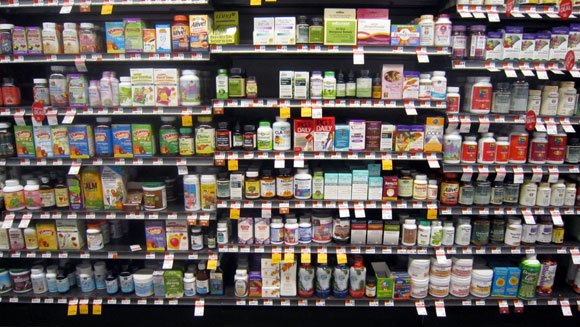
Beware of Hidden Dangers of Synthetic Supplements: What you don't know can hurt you!
Another reason to eat your greens & drink your green smoothies every day!
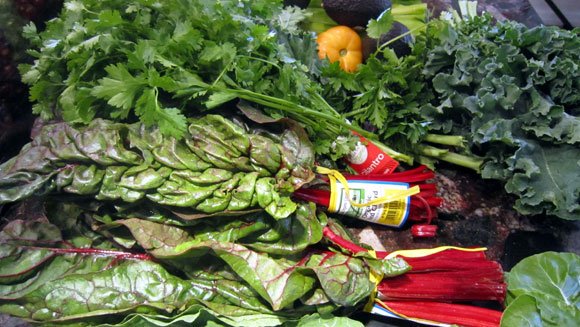
Nature knows best when it comes to nutrition. Whole foods are best! Eat your greens and drink your smoothies!
More Resources
“Super Immunity” by Joel Fuhrman, MD
If you are pregnant, DO NOT take prenatal vitamins that contain folic acid!
The little known (but crucial) difference between folate and folic acid
Is the mainstream still cheating you out of the best health possible—with folic acid?!
The Folic Acid Fallacy: How Your Multi-vitamin Might be Killing You
Questions? Comments? Suggestions?
If you have a favorite recipe, why not submit it here in the comment section of this smoothie recipes blog for others to enjoy too!
I also welcome any comments, questions and suggestions. Thanks!
Whenever you hear someone say one thing about health and nutrition, you can always find someone else saying an exact opposite. No wonder most people are confused about what to eat! It’s hard to make sense from all that noise.
For example, Is there a hidden danger lurking in green smoothies? There have been articles appearing on the Internet recently about dangers of oxalic acid and how it can have devastating effect on your health.
The authors’ advice has been to limit or completely avoid greens and stop making green smoothies! (What should we be eating instead? Butter, milk, meat and sausages – according to one author, whom I will not cite here).
Even though 2/3 of our population is currently considered obese; diabetes, high blood pressure, cancer and other ailments reached epidemic proportions; as people load up on high fructose, genetically modified corn syrup-filled sodas, french fries and fried chicken, pizza and super-sized meals…we need to limit green smoothies as they can “devastate” your health?
Wow, really??
The incidence of kidney stones is high in the US. However, it’s extremely unlikely that greens are the reason why we have lots of kidney stones, since most Americans eat very little greens.

It is estimated that about a million people in the United States are treated for kidney stones each year. About 80% of kidney stones formed by adults in the U.S. are calcium oxalate stones – surely these people aren’t all obsessive green smoothie drinkers (or even spinach-salad-fanatics, for that matter).
Most of the foods that contain oxalates are powerful healing superfoods that can have a profound POSITIVE effect on your health and well-being, and should not be eliminated from the diet!
There is plenty of research that confirms the benefits of leafy greens, fruits and vegetables. A diet rich in alkaline foods (vegetables, fruit) is associated with a lower risk of stone formation, as well as lowered risk for most chronic diseases.
These are the natural foods for humans – foods that our bodies have been designed to thrive on.
Instead of limiting greens, how about eliminating the true contributors to kidney stones (as well as obesity, diabetes, high blood pressure, and cancer) – for optimal health:
Soft drinks
Sugar
Animal proteins
Bad fats
Salty foods (or any refined salt)
Coffee, tea and alcoholic beverages
How come no one is screaming about the dangers of consuming excessive animal protein, sugar or sugar substitutes? Is it because they are safe? Or perhaps there is too much money at stake, with big industries protecting their profits?
Multiple studies in different countries have demonstrated that the over-consumption of animal protein is a major risk factor in kidney stones formation. Sodas and other highly processed high-fat, high-sugar foods have been implicated in obesity and diabetes epidemic. Yet, we see them everywhere around us – advertised on TV, online, and even in school cafeterias.
Noone is campaigning for more spinach or broccoli.
And now spinach is being under attack, accused of causing serious health consequences.
So, What About Oxalix Acid
Oxalic acid (also referred to as oxalates) is found in many foods, including spinach, swiss chard, strawberries, soy, almonds, and many other foods. Oxalate content of a single food group varies based on the time of year, the type of soil it is grown in and a host of other factors specific to the growing conditions of the plant.
Our bodies produce oxalic acid, often synthesizing other substances such as vitamin C into oxalic acid, so whether you eat foods that contain it or not, your body maintains a naturally-occurring level of oxalic acid.
Oxalic acid has been shown to bind with calcium (and magnesium, iron, sodium and potassium) in the intestine, thus interfering with the absorption of these. ‘Typically, foods that have high oxalic acid also have high calcium, so they buffer each other.
Oxalic acid seems to be a controversial subject among nutritionists and health experts. Finding a clear answer regarding the potential safety or dangers of this substance can make your head spin. Victoria Boutenko did an excellent job addressing this issue, so if you want detailed research, read this blog post.
If You Are Concerned About Oxalates
Even though oxalic acid is not believed to be a health concern for most people, it can be difficult to digest for a certain percentage of the population. The most common cause of a toxic build-up of oxalate in the system is poor intestinal health or function, including an unhealthy of unbalanced intestinal flora (often from overuse of antibiotics), irritable bowel syndrome, leaky gut, celiac disease or fat malabsorption.
If you have a history of kidney stones or a medical condition that is complicated by the consumption of oxalate-rich foods, consult your doctor or health practitioner for advice.
In general, replacing oxalate-rich greens such as spinach and parsley with Romaine lettuce or other lettuces will lower exposure, but also lower overall nutrient density of your smoothies. Mixing spinach with lower-level oxalate-containing greens will help lower oxalate content.
HIGH OXALIC ACID CONTENT:
Beet leaves, purslane leaves, spinach, swiss chard (leaves & stalks), rhubarb, parsley, amaranth leaves, sorrel.
LOW OXALIC ACID CONTENT FOODS:
Dandelion greens, most fruits, bok choy, kale, watercress, escarole, mustard greens, turnip greens, broccoli, tomatoes, asparagus, and cabbage.
Rotating greens and other foods regularly is important as it helps to limit over-consumption of any one nutrient (or toxin) and provides more health-promoting benefits.
Also, listen to your body and learn to pick up on the subtle cues it’s giving you.
Green Smoothies with Low Oxalic Acid Content
For those of you, who would rather not consume high amount of oxalic acid, here are some recipes of green smoothies with very low oxalic acid content (from Victoria’s blog).
Sweet Sprouts
1 bunch green leaf lettuce
1 handful alfalfa sprouts
2 ripe apples, peeled, pits and stems removed
2 ripe bananas, peeled
2-3 cups water
Blend well.
Yields 2 quarts
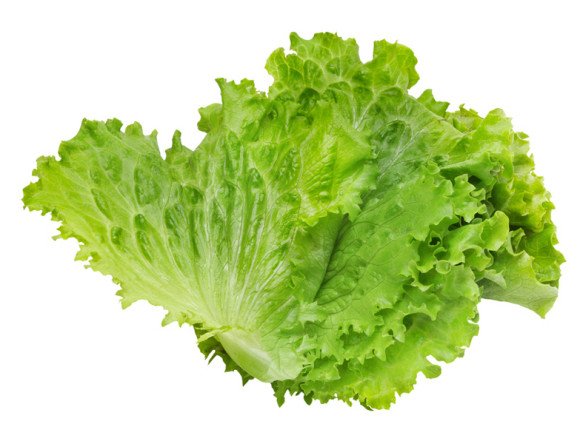
Romaine Green Smoothie
1 head romaine lettuce
2 ripe apples, peeled, pits and stems removed
1 ripe mango, peeled, pit removed
3 cups water
Yields 2 quarts
Green Freshness
1 head red leaf lettuce
1 ripe cantaloupe, peeled, seeds removed
1 cup fresh apple juice
2 cups water
Yields 2 quarts
Lettuce Drink to Your Health
1 handful red leaf lettuce
1 handful green leaf lettuce
1 cup cherries, pits removed
2 ripe bananas, peeled
2 cups water
Yields 2 quarts
Enjoy Your Green Smoothies!
Green smoothies provide tons of nutrients that our bodies need to function optimally, many of these from the potent antioxidants found in spinach, kale, chard, watercress, blueberries, strawberries, carrots, oranges, peppers, tomatoes and other – all of which have oxalic acid.
I certainly wouldn’t avoid spinach or other leafy greens because of the oxalic acid effect. Spinach has a lot to offer nutritionally: it’s an excellent source of folic acid, potassium and magnesium, as well as vitamin K, carotenes, vitamin C and lutein, important for healthy eyes.
So go ahead and enjoy your green smoothies and the health benefits they provide!
More reading on this issue:
Oxalic Acid and Green Smoothies
Can green smoothies “DEVASTATE” your health?
More Meat, More Disease
If you are worried about getting enough protein when drinking green smoothies, I want to tell you that there is no reason to worry!
You don’t need to be adding any expensive protein powders to your smoothies, munching on protein bars, or loading your salads with “lean protein” to boost your protein intake.
Our entire society is on a protein binge, brainwashed with poor information. We live in such a “must have enough protein” society (thanks to the meat industry and let’s not forget those Atkins and Paleo diet proponents), that few of us actually realize how harmful and unnecessary that is.
How Much Protein Do Humans Really Need?
Protein is an essential macro-nutrient that provides the building blocks for our bodies. However, the amount of protein that we need is greatly overestimated.
Despite the advertising hype of the meat and dairy industries, humans require an extraordinarily low amount of protein in their diets. The primary function of protein is growth, which is negligible in adults, as well as repair from injury and replacement of worn-out cells.
We need only 2.5 to 10% of our calories from protein, according to official sources. Many official groups, including the World Health Organization suggest that eating a mere 10% of our total calories as protein is sufficient. Protein deficiency is extremely rare in developed countries, even for those on strict vegan diets.
If you think that this is not enough, consider this: our greatest need for protein is when we grow the most, i.e., in infancy. An infant practically doubles in size during the first 6 months. The ideal food for a baby is mother’s milk. Therefore, breast milk can be used the “gold standard” for nutrition – including protein content.
Mother’s milk provides on average approximately 6% of calories from protein (far less than cow’s milk, which has 22% of calories as protein). This is the maximum concentration of protein we will ever need in coming from our food.
It should be obvious that adults do not require more protein per calorie than this, as infants, with their extremely rapid rate of growth have the highest need for protein per calorie of all humans.
So even though meat has more protein than vegetables, it doesn’t matter, because the amount in vegetables is already much more than you need. If you’re shopping for a car and one goes 200 miles an hour and the other goes 300, it doesn’t matter, since the maximum speed limit in the U.S. is 80 mph. Two hundred mph is more than enough for a car, and 22% protein from vegetables is more than enough when your protein needs are only 2.5 to 10%.
The extra protein isn’t better, it’s actually harmful. Too much protein – especially protein coming from animal sources – is dangerous and has been linked to various serious health conditions, including heart disease, cancer, strokes, hypertension and osteoporosis.
Most American’s get way TOO much animal protein. The average American eats over 100 grams a day – an unhealthy amount. Most adults only require 30-50 grams of protein a day. Still, many of us, including athletes, fitness enthusiasts, bodybuilders, dieters, and the overweight are obsessing about their proteins and turn to meat, dairy, protein powders, protein drinks, and nutritional bars in a quest for even more protein.
Myth: “People Need 20% Protein—and Animal Protein Is Best”
Many people still believe that protein is only available from meat and animal sources and we will get sick, weak, lose all muscle mass, or even fall over dead without animal protein! They even use “meat” and “protein” interchangeably, as if plant foods had no protein content at all!
(Once you realize that protein is a nutrient that is present in most foods we eat, you will see how the MyPlate recommendations make no sense, since vegetables, fruits and grains all have PROTEIN!)
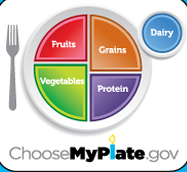
Protein on MyPlate.gov - what is wrong with this picture?
If you are worried about protein deficiency, you need to know that plant foods contain protein too, for example, rice is 9%, potatoes are 8%, corn is 11% and spinach is about 30% protein per calorie.
People often comment they know sickly vegetarians to justify daily meat eating as a healthy lifestyle choice. But of course, not all vegetarians eat a healthy diet or live a healthy lifestyle: although they don’t eat meat, they might eat white bread and cotton candy for breakfast, and avoid exercise like plague! Have you ever seen a sickly gorilla? He eats plants all day and gets plenty of physical activity.
The truth is, taking too much protein – especially animal protein – is not a small matter. It contributes to many diseases, ages you prematurely and can cause significant harm.
While vegetable foods are alkaline, animal products are acidic foods, and they require huge amounts of hydrochloric acid from the stomach to digest them. This acid needs to be neutralized, at the expense of our bones. The excess protein you are not using isn’t stored by the body as protein; it’s converted to fat, or eliminated via the kidneys. Eliminating protein leaches even more calcium and other minerals from the bones and breeds kidney stones.
How Can We Get Enough Protein?
When a diet is centered around WHOLE unprocessed foods (vegetables, whole grains, beans, nuts & seeds), the diet automatically contains a healthy amount of protein. It does not need to be a concern. No protein counting is necessary.
A typical assortment of vegetables, nuts, seeds, beans and whole grains supply about 50 grams of protein per 1000 calories. And don’t forget, some green vegetables are almost 50 percent protein, and when you eat more green vegetables, you are getting your protein with a ton of other super-nutrients for optimal health.
Many factors determine how many calories and how much protein you really need: age, size, growth, activity level, digestion, metabolism, body type, genetics, culture, geography.
By eating a variety of these foods, you are getting much more than protein. Plus, you are priming your body to be disease-proof.
It’s easy to build muscle even on a completely plant-based vegan diet
And if you want to build muscle, let’s remember that exercise, not extra protein, builds strength, denser bones, and bigger muscles. Loading on various protein powders and other muscle building supplements may lead to higher body mass; however, excessive body mass, even excessive muscle development from over-consumption of animal products, is a risk factor for heart attacks and other diseases later in life.
Animal products may lead to quick muscle mass, but eating lots of animal flesh is a Faustian bargain: short-term gain for a steep long-term price.
So, if you are wondering if you should I add protein powders to your smoothie after your workout, the answer is ‘No.’ As an athlete, your body needs carbohydrates at each meal to fuel your muscles, as well as vitamin C, antioxidants and various other nutrients, to neutralize the free-radicals created during the workout; and green smoothies are great for that. There are no antioxidants or vitamin C in meat.
Plant foods supply plenty of protein even for athletes and those trying to build muscle. Remember, the largest land animals in the world, elephants, are exclusively vegetarian. Your body can assemble all the amino acids from a plant protein source to create quality muscle mass.
Eating more calories usually supplies the extra protein for building muscle mass. Carbohydrates are better for supplying extra energy for strenuous activity.
What About Pregnancy and Breast Feeding?
Increased protein needs during pregnancy and breast-feeding are usually met by the extra calories from eating more food.
Plant-Based Diet (and Protein) For Better Health
Even though nutritionists seem to disagree on many topics, most agree that plant-eaters tend to live longer and healthier lives than do meat eaters. In every way, the brocolli-munchers tend to be healthier than the meat-eaters:
- Plant eaters have a lower incidence of cancer, especially colon, stomach, mouth, esophagus, lung, prostate, bladder, and breast cancers.
- Plant eaters have a lower incidence of cardiovascular disease, namely heart attacks and stroke.
- Plant food is better for your heart, since it is low in cholesterol and saturated fat, and high in fiber.
- Plant eaters are much less likely to get diabetes than animal eaters.
- Plant eaters tend to weigh less than meat eaters, even those who skin their chicken and trim the fat off their steak.
Even the U.S. Department of Agriculture’s dietary guidelines recommend eating more vegetables and grains and less meat, despite pressure from the politically-connected meat industry to promote meat.
Green Smoothies are Naturally Rich in Protein
No, really.
They are chock full of amino acids because greens contain lots of amino acids. Your body uses these amino acids to produce protein. The more greens you eat, the more amino acids that you provide your body with.
Dark green leafy vegetables contain similar or larger amounts of amino acids than the Recommended Daily Allowance (RDA). However, because of the confusion between vegetables (roots) and greens, we are told that vegetables, including greens, are a poor source of amino acids. Dr. Joel Fuhrman wrote in his book Eat to Live: “Even physicians and dietitians… are surprised to learn that …when you eat large quantities of green vegetables, you receive a considerable amount of protein.”
I like the explanation provided by Victoria Boutenko on her blog:
Let me explain the difference between complex proteins found in meat, dairy, fish, etc. and individual amino acids, found in fruits, vegetables, and especially in greens.
It is clear that the body has to work a lot less when creating protein from the assortment of individual amino acids from greens, rather than the already combined, long molecules of protein, assembled according to the foreign pattern of a totally different creature such as a cow or a chicken. I would like to explain the difference between complex proteins and individual amino acids with a simple anecdote.
Imagine that you have to make a wedding dress for your daughter. Consuming the complex proteins that we get from cows or other creatures is like going to the second hand store, and buying many other people’s used dresses, coming home and spending several hours ripping apart pieces of the dresses that you like and combining them into a new dress for your daughter. This alternative will take a lot of time and energy and will leave a great deal of garbage. You could never make a perfect dress this way.
Consuming individual amino acids is like taking your daughter to a fabric store to buy beautiful new fabric, lace, buttons, ribbons, threads, and pearls. With these essential elements you can make a beautiful dress that fits her unique body perfectly. Similarly, when you eat greens, you “purchase” new amino acids, freshly made by sunshine and chlorophyll, which the body will use to rebuild its parts according to your own unique DNA.
Contrary to this, your body would have a hard time trying to make a perfect molecule of protein out of someone else’s molecules, which consist of totally different combinations of amino acids. Plus, your body would most likely receive a lot of unnecessary pieces that are hard to digest. These pieces would be floating around in your blood like garbage for a long time, causing allergies and other health problems. Professor W. A. Walker from the Department of Nutrition at the Harvard School of Public Health, states that, “Incompletely digested protein fragments may be absorbed into the bloodstream. The absorption of these large molecules contributes to the development of food allergies and immunological disorders.” Source: Raw Family Blog
What About Adding Protein Powders To A Smoothie
As I have explained above, green smoothies already contain all the proteins that you need. A protein powder is a highly processed food, and I don’t recommend adding any to your green smoothies. If you decide to do it, choose high quality plant-based powder.
If you wish to add more high-protein foods to smoothies to make them more filling, I recommend adding a handful of nuts or seeds, such as pumpkin or sunflower seeds. Adding ground nuts or seeds to your smoothie not only adds protein, but boosts the healthy fat content which makes a green smoothie more satisfying and keeps you full longer. Nuts and seeds are also mineral powerhouses and will make your smoothie not only high in vitamins and antioxidants, but also rich with minerals.
Try small amounts of raw nuts such as almonds, cashews, walnuts, Brazil nuts or macadamia nuts. Sunflower, pumpkin, sesame, hemp, flax and chia seeds are all excellent when ground up and added to smoothies. You can also add a tablespoon of raw nut butter, or substitute water with almond milk.
Just don’t overdo the fat content of your smoothie or else bloating, gas and digestion problems may result.
What About Milk?
While milk does contain protein, all of our smoothie recipes are dairy-free. I do not recommend using milk or yogurt as a base for smoothies, especially green smoothies. Consuming dairy has been linked to a variety of health problems and can get in the way with your ability to lose weight and obtain optimal health. For more on dairy, click here.
Resources:
World Health Organization (http://www.who.int/nutrition/publications/public_health_nut9.pdf)
http://michaelbluejay.com/veg/protein.html
Questions? Comments? Suggestions?
If you have a favorite recipe, why not submit it here in the comment section of this smoothie recipes blog for others to enjoy too!
I also welcome any comments, questions and suggestions. Thanks!
Have you had your dandelions today?
For many people when they think of dandelions, their first thought is the weeds on their lawn. They view the common dandelion as a weed, and wage a small war to eradicate the plant from their lawns and gardens, but I want to encourage you to eat them!
Not everyone knows that dandelions are very healthy, and can be used in many recipes, including (of course) green smoothies.
Since they grow wild pretty much everywhere, you have a completely free food source right in your backyard or in the wild. Just don’t use the ones with the pesticides and herbicides on them! For those without access to organic lawns, dandelion greens are also available in farmers markets.
Health Benefits of Dandelion Greens
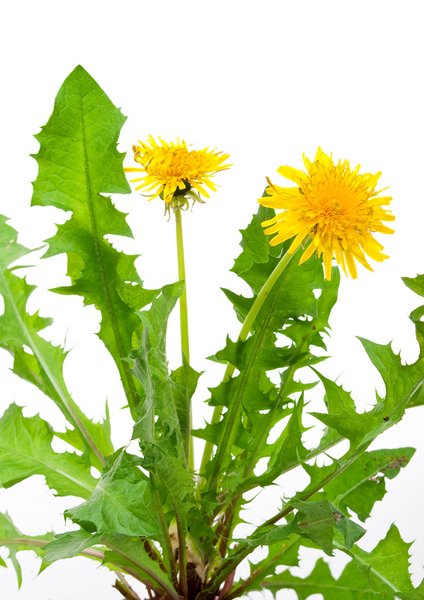 As all greens, dandelions are low in calories, but super-high in healthy nutrients, which makes them the ideal addition to green smoothies. In fact, this innocuous “weed” is one of the most nutrient-dense plants you can eat. Everything, from the flower all the way down to the roots, is edible.
As all greens, dandelions are low in calories, but super-high in healthy nutrients, which makes them the ideal addition to green smoothies. In fact, this innocuous “weed” is one of the most nutrient-dense plants you can eat. Everything, from the flower all the way down to the roots, is edible.
Dandelions are great for detoxing the liver and gallbladder and to help support kidney function. They may help stabilize blood sugar (great for diabetics) and lower bad (LDL) cholesterol. They are also are an excellent source of vitamins A, C, E, K, calcium and iron, packed full of antioxidants, and contain copper, manganese, potassium, and magnesium. Just one half cup of dandelions contains more calcium than a glass of milk, and more iron than spinach. Studies have found that the regular consumption of dandelion greens can lead to a reduction in your risk of cancer and stroke.
The taste of dandelion resembles a slightly bitter green like arugula. Look for firm, fresh, tender, bright green leaves that aren’t discolored or wilted. When refrigerated in a plastic bag, they will keep for a few days. Like spinach, dandelion greens are commonly enjoyed raw, but they also taste fantastic sautéed, braised, or even stewed.
You can toss them into your favorite salad medley, eat them fresh in salads, or cook them on the stove. Wash, trim, tear, and toss in your favorite salad medley. Sauté with garlic and onions. Substitute spinach for dandelion greens in recipes, such as pesto sauce.
Dandelion Green Smoothie Recipes
Dandelion greens have slightly bitter taste which might be difficult to mask with fruit in a green smoothie, so start with adding small amounts and/or mixing them with other greens, such as spinach or kale. In general, the younger the greens, the milder the taste, so you may want to choose the younger leaves.
You can help mask the bitter taste by using strong tasting fruit and berries, such as pineapple, oranges, bananas, strawberries or other ripe berries. The other way is to process them with some sort of fat, i.e. nuts, oils, and avocados.
Personally, I enjoy slight bitterness in my smoothies, especially since I know that it’s so good for me! The bitterness actually stimulates bile production, aids digestion, and cleans pretty much every inner organ inside the body. I find that my taste buds get used to the flavor quickly and after the first couple sips and I soon don’t mind the flavor at all. But I guess it’s an acquired taste.
Dandelion Green Smoothie Recipe #1
1-2 cups dandelion greens
1-2 pears
2 dates
1-2 cups water or coconut water
Blend on the highest speed until smooth and creamy. Yield: 3-4 cups
Dandelion Green Smoothie Recipe #2
2 cups dandelion greens
1 lemon (peeled)
2 large apples
1 banana
1-2 cups water
Dandelion Green Smoothie Recipe #3
½ bunch dandelion greens
2 stalks celery
2 peaches
½ pineapple
½ inch fresh ginger root
2 cups water
Blend in blender until smooth! Enjoy!
Dandelion Green Smoothie Recipe #5
If you are worried about the fruit content, here are some savory options.
1/2 bunch dandelion greens
4 tomatoes
2 dates (optional)
2 cups water
Dandelion Green Smoothie Recipe #6
1/2 bunch dandelion greens
1 medium cucumber
½ avocado
2 dates (optional)
2 cups water
Blend in blender until smooth! Enjoy!
For all my blending recipes I use Vitamix. If you don’t already own a VitaMix, I strongly encourage you to check out what this machine is capable of! For more information about VitaMix you can go directly to the VitaMix website. You may also want to read my post about the Best Blender.
I LOVE my VitaMix and highly recommend investing in one if you are ready to make serious changes to your diet. I have had mine for almost 5 years and use it daily!
If you decide to purchase Vitamix – be sure to use Promotional Code 06-004554 to get free shipping.
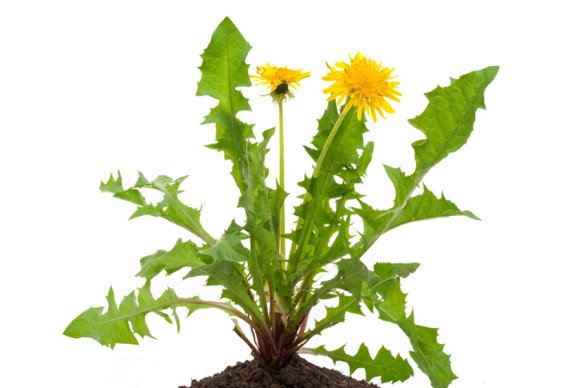
Questions? Comments? Suggestions?
If you have a favorite recipe, why not submit it here in the comment section of this smoothie recipes blog for others to enjoy too!
I also welcome any comments, questions and suggestions. Thanks!
Grain based products are everywhere today: pastas, doughnuts, breads, cookies, crackers, cereals, cakes, pastries -there is no escaping or hiding from them.
Most of us grew up learning that grains were one of the four major food groups essential to a balanced diet, at least as important (if not more) than fruits and vegetables. We have been encouraged to eat six to eleven (!) servings of grains per day.
Why Are Grains So Ubiquitous?
In case you are wondering, one of the reasons behind this heavy promotion is that grain-based foods are cheap to make and offer great profits to the manufacturers. The markups on grains are huge, for example, bread is made from about 5 cents of wheat, but we usually pay at least one dollar per loaf.
Grain based products also have long shelf lives, so they don’t spoil easily; plus they are so nutritionally sterile that even insects wouldn’t bother infesting them! If you don’t think that food producers have any say on what the US government recommends in the official dietary guidelines, think again. It’s common knowledge that big food manufacturers are influencing what’s on our plate – big time. They also have the money for lobbying to receive subsidies for the production of even more grains, as well as heavy advertising that includes appealing to both children and adults with cute cereal names and toys in boxes of cereals.
For many children cereal is now their main source of vitamins! For adults, highly processed cereals are promoted as “cholesterol lowering” foods, and whole grains are promoted as a way to prevent digestive diseases and cancer.

The Dark Side of Grains
Problems with gluten tolerance occur much more often than most people realize, however it’s often unrecognized or misdiagnosed, as it can manifest itself by a host of seemingly unrelated symptoms. Gluten intolerance is often associated with IBS, depression, difficulties with your weight, aches and pains in bones and joints, and chronic fatigue. If you suffer from some or all of these problems and you consume foods that contain gluten, perhaps you are gluten intolerant.
As if that was not enough, we get hooked on grains on much deeper level. Grains have drug-like substances that create true food addictions and irresistible cravings in some, if not many people.
Grain allergies and addictions (especially to wheat) are very common and they are unrecognized contributors to the growing epidemic of obesity. Like true addicts, many people are strongly attracted to foods they are allergic to get a “high” from drug-like compounds in them. When the feeling wears off, they crave another “fix”, so they have to eat more of these foods. Unrecognized grain allergies and addictions lead to too-strong-to-resist cravings and overeating, which ultimately lead to weight gain.
Although the U.S. government promotes a high intake of grains, following this strategy actually sets up a lot of people for health problems.
To stay healthy and maintain ideal weight effortlessly, all of us should eat far fewer grain products.
Some of us should eat no grains (not even whole grains) at all.
If these statements come as a shock to you, challenging your beliefs about healthy nutrition, you are not alone.
The truth is grains have a dark side that few people seem to know about. Eating lots of them can potentially lead to virtually every problem in the medical book, including obesity, diabetes, heart disease, some types of cancer, chronic fatigue, digestive disorders, infertility, osteoporosis, and other.
We live in a society where wheat is eaten daily at almost every meal. Pasta, bread, and cereals are promoted as healthy food. They are centerpieces of many people’s diet.
However by loading up on these foods, you may be setting up for degenerative diseases, such as heart disease and diabetes, not to mention weight gain.
Even the whole grains, which are often recommended by nutritionists in place of refined grains, although they do contain more nutrients than their refined counterparts, they also have many anti-nutrients that interfere with good health. By interfering with absorption of many important nutrients they lead to nutrient deficiencies and may set the stage for osteoporosis and autoimmune disorders, not to mention anemia.
Gluten Free Diet: What we should be eating for health & perfect weight
For people suffering from wheat intolerance, the gluten-free diet is no picnic. The focus of a gluten-free cooking is often on replacing gluten flour in baked goods recipes with acceptable starches made from rice, arrowroot, potato, other legumes like chickpeas and wheat starch (all the protein has been carefully removed).
And it isn’t just difficult and inconvenient; but also expensive. For most people it means studying the labels for gluten that often shows up unexpectedly on the list of ingredients.
Fortunately, there is a better way.
The easiest – and best – way to get rid of gluten from your diet is to eat only unprocessed foods. All unprocessed food (obviously, with the exception for the grains which contain gluten) is gluten-free.
In many respects it is easier and nutritionally wiser to forgo the baked goods altogether and eat other foods. The task of changing your diet is very much like moving to another country and culture. You may try to bring all your old habits with you, and struggle to get all of the ingredients that you are used to to create the meals you are used to, or you can gracefully, and with a sense of adventure try the new cuisine.
Certainly, baked foods are delicious and tempting, but so are creatively prepared rice, vegetable, fruit, fish, legume, and meat dishes. Even with multiple exclusions, an appealing, varied diet is within reach if you are willing to change your eating style. The main thing is to be inspired to create and enjoy a new cuisine that will diminish your disturbances, sustain your interest in food, and provide balanced nutrition.
Here is the summary of recommendations for a healthy diet:
•At least 60-80 % of the calories consumed should come from fresh, raw fruits, vegetables, and leafy greens (essential!), as well as nuts and seeds. The important thing the bulk of your fruits, veggies, and greens should be eaten RAW. Raw foods have a wonderful effect on the body – giving you more energy and supplying essential nutrients in the completely unchanged, unprocessed form – just as nature intended them for us!
Since you already know how to make green smoothies, this is an easy part! In the morning, prepare a quart or more of green smoothie and drink it during the course of your day. Eating salads and green juices made with a juice extractor is also a great idea.
•The rest of what you eat during the day should be steamed or slightly cooked vegetables, legumes, and some gluten-free whole grains. Soup, stews, salads and various side dish recipes can be found that are completely gluten free. The following grains and grain-substitutes can be used: rice, quinoa, buckwheat (more closely related to spinach than wheat), corn, amaranth, soy, millet (a good substitute for couscous), potato and tapioca as well as flour made from them.
•Although unprocessed meat, fish, eggs, cheese, milk,are all gluten free, for optimum health it’s recommended to limit consumption of animal products to once or twice per week, or eliminate completely.
•Eliminate all processed foods from your diet – this will save you time studying the labels in the supermarket. If you decide to occasionally have them – read the label carefully. Many foods that may on the first glance seem like gluten free, may still have some quantities of wheat added.
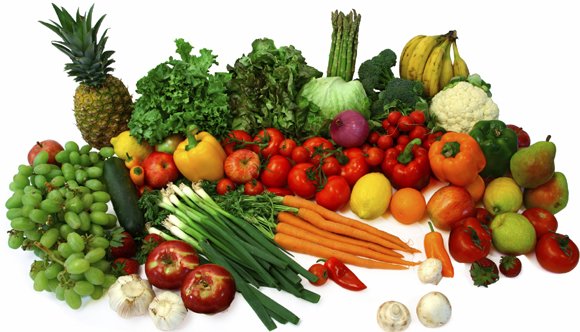
Tolerable foods to eat:
Corn
Rice
Wild rice
Oats
Buckwheat
Millet
Arrowroot
Amaranth
Quinoa
Wheat grass
Tapioca
Taro
Barley grass
Vinegars: apple cider, balsamic, rice
Bean flours
Not OK/Intolerable foods and drinks
Wheat
Rye
Kamut
Teff
Spelt
Soy







 As all greens, dandelions are low in calories, but super-high in healthy nutrients, which makes them the ideal addition to green smoothies. In fact, this innocuous “weed” is one of the most nutrient-dense plants you can eat. Everything, from the flower all the way down to the roots, is edible.
As all greens, dandelions are low in calories, but super-high in healthy nutrients, which makes them the ideal addition to green smoothies. In fact, this innocuous “weed” is one of the most nutrient-dense plants you can eat. Everything, from the flower all the way down to the roots, is edible. 

